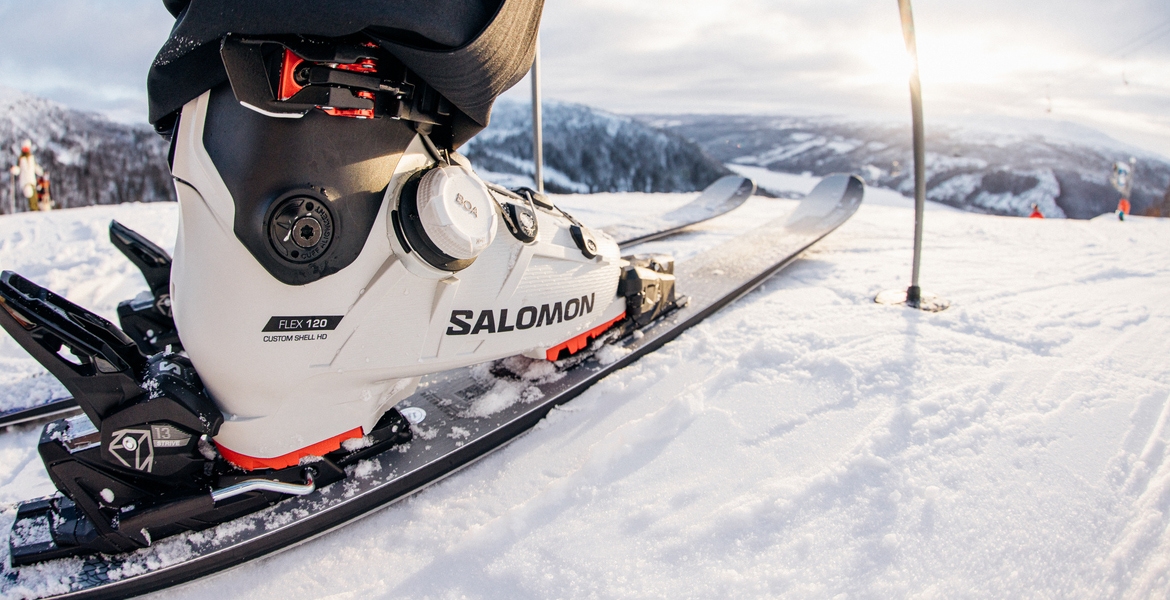The flex rating of a ski boot is a metric that specifies the stiffness of the boot. The flex rating is generally between 60 for the softest boots and 140 or more for race boots and other high-performance boots. Along with size and width, it is a fundamental parameter to take into account when you’re choosing a pair of ski boots.
Manufacturers achieve the desired flex by using different materials in the construction of the shell, varying the thickness of the material, and in the overall design of the boot. The number of buckles and the strength of the strap at the top of the collar also play a role in flex. Finally, the stiffness of the inner liner will influence the overall flex of the boot.
There is not an industry standard for boot flex. In boots with the same flex rating, differences can be observed between different brands and categories (on-piste, all mountain, freeride, freestyle or touring).
How to choose the right flex
Choosing the flex of your boot is based primarily on your ability level and your morphology:
Women’s boots
- Flex from 60 to 90: beginner or occasional skier, recreational skier
- Flex from 90 to 110: skis regularly and has a good ability level
- Flex from 110 to 120: expert skier with a very high ability level
- 130 and over: competitive skier

Men’s boots
- Flex from 70 to 90: beginner or occasional skier
- Flex from 90 to 120: skis regularly and has a good ability level
- Flex from 120 to 130: expert skier focused on performance. Or big guys.
- 140 and over: competitive skier

Kids’ boots
- For little rippers with a boot size between 14 and 21 Mondopoint (22 – 34 EU), there is no flex rating.
- For bigger kids with a boot size between 22 and 26 Mondopoint (35 - 41 EU), flex ranges from 60 to 90. As with adults: the better your child’s ability level, the higher the boot flex.
The flex of a ski boot can vary under different conditions
- Temperature: the plastics used to make ski boots are sensitive to temperature variations and become stiffer when cold. So be careful when trying them on in the store where the boots are generally softer than they will be on the slopes.
- Buckle tightness, especially those on the cuff and the strap, influence the rigidity of the boot.
- Age of the boot: as plastics get older, they get softer which affects the flex of the boot.
In summary, the flex rating of a ski boot indicates its rigidity and responsiveness. Skiers who want more performance will look for a higher flex rating, which indicates more power and precision underfoot. On the other hand, a beginner skier will have more fun at lower speeds with soft, comfortable boots with a lower flex rating.














